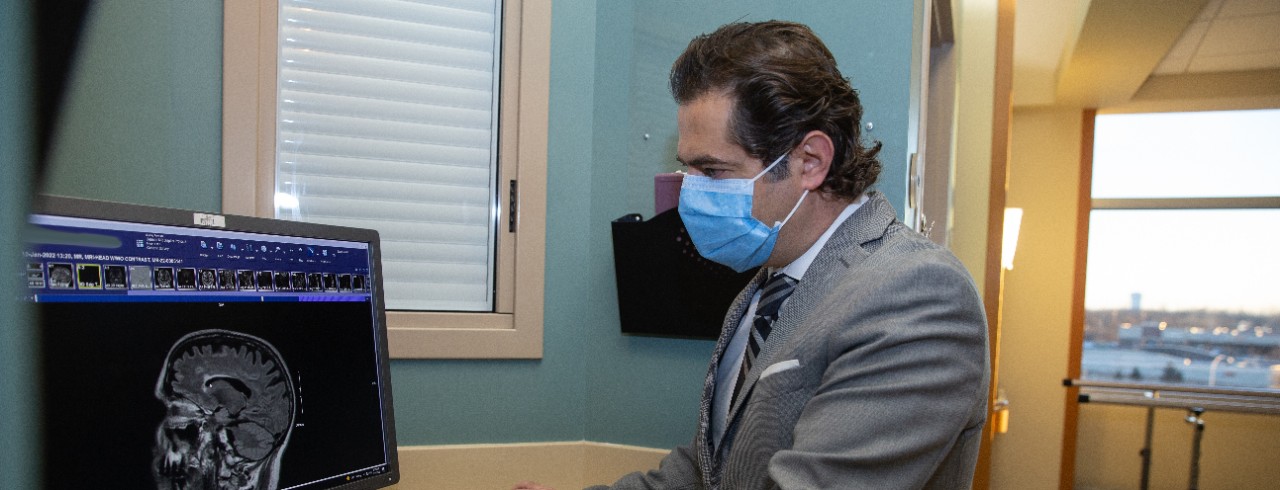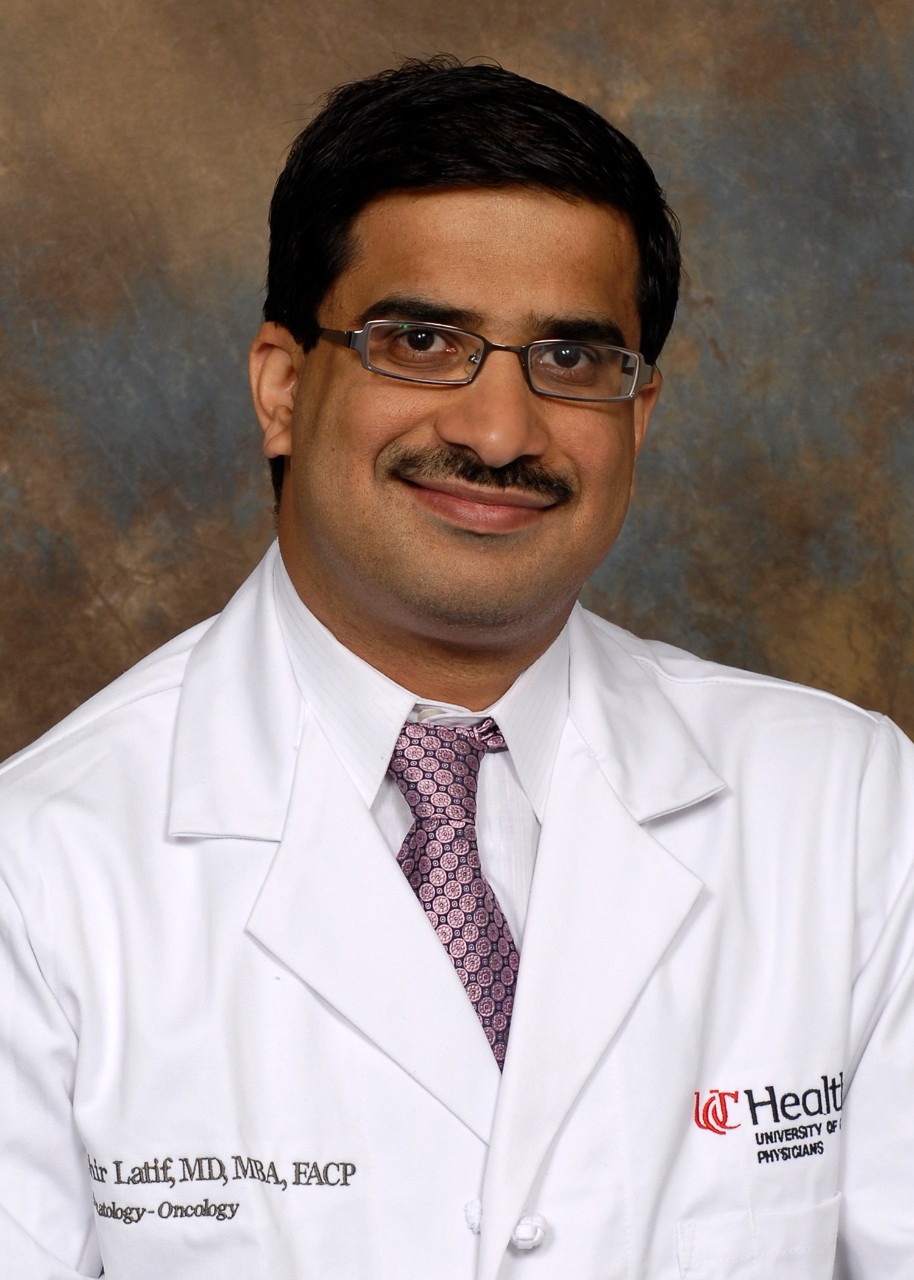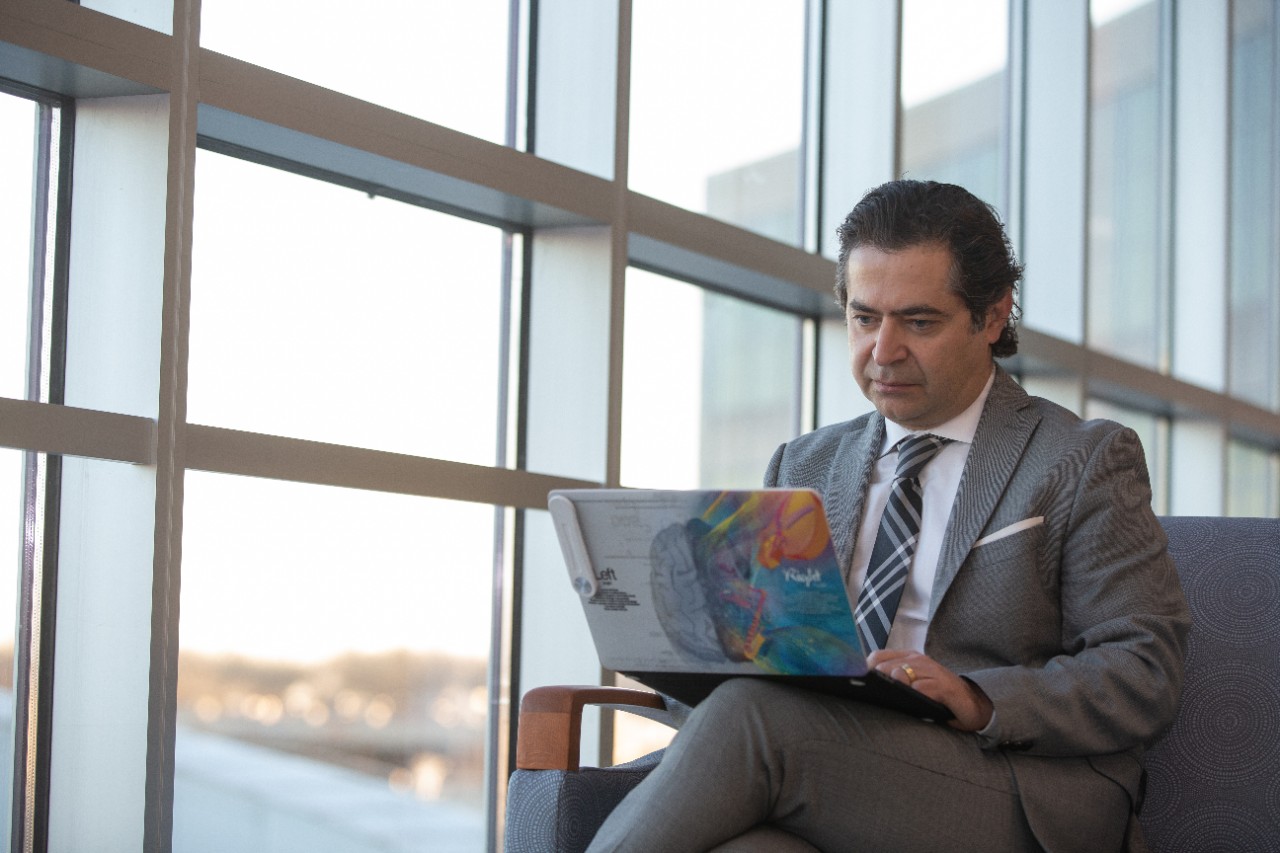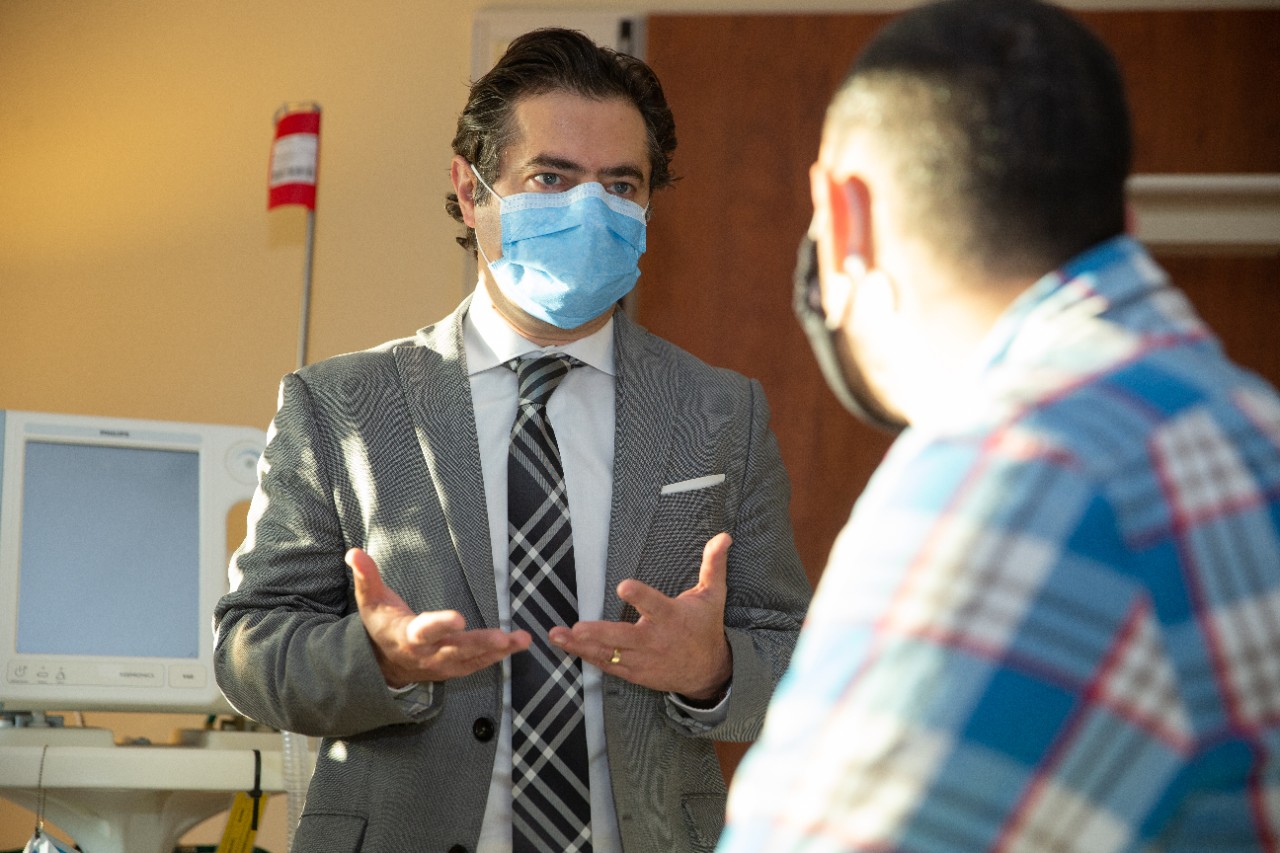
Advancing multiple sclerosis treatment
UC researchers host NIH trial studying safety and effectiveness of stem cell transplant therapy
When dealing with malfunctioning electronics, information technology professionals will often first suggest you turn the device off and then back on. Resetting the device can sometimes solve whatever problem was occurring without a need for further intervention.
Researchers at the University of Cincinnati are exploring whether resetting the body’s immune system through autologous hematopoietic stem cell transplant (AHSCT) can have a similar result as a safe and effective way to treat multiple sclerosis (MS), an autoimmune disorder. UC is one of 19 international sites hosting a new clinical trial called BEAT-MS, sponsored by the National Institute of Allergy and Infectious Diseases and funded by the National Institutes of Health.
Aram Zabeti, MD, is the lead principal investigator of the trial at UC and said treatments for MS have improved, but there is still no cure.
“We have better and better treatment in controlling MS relapse and preventing further disability, but some patients who have aggressive MS do not respond well to current treatment,” said Zabeti, associate professor of neurology in UC’s College of Medicine, director and endowed chair of the UC Waddell Center for Multiple Sclerosis and a UC Health physician. “Still the disease remains active, but in a lesser degree.”

Tahir Latif, MBBS, MBA. Photo/University of Cincinnati.
Tahir Latif, MBBS, MBA, said since patients continue with the current treatments of immunosuppressive therapies for years, the treatments can sometimes eventually stop working or present problems due to high cost or infections developing. About 40% of MS patients’ therapies become ineffective at some point, he said.
Alternatively, Zabeti said AHSCT can reset or reboot a patient's immune system with the hope that the process can stop the disease in its tracks for several years without the need for ongoing treatment.
“I think AHSCT is not only more effective than current MS treatments, but when done through clinical trials it is relatively safe and given through a short period of time when compared to the risk of MS treatments, which are usually lifelong,” Zabeti said.
Transplant procedures
Latif, clinical professor in the Department of Internal Medicine in UC’s College of Medicine, director of Infusion Services at the UC Medical Center and a UC Health oncologist and hematologist, is UC’s principal investigator for the transplant side of the study.
Prior to AHSCT procedures, patients undergo chemotherapy treatment to kill the malfunctioning stem cells. Latif explained there have been various levels of chemotherapy intensity used before stem cell infusion in different studies completed for MS patients, making it difficult to determine the best treatment before transplants.
The BEAT-MS study will use an intermediate intensity chemotherapy regimen prior to transplant, which is hoped to be more effective than the lower intensity without the serious side effects that can come from the higher intensity.

Aram Zabeti, MD, is the lead principal investigator at UC for the BEAT-MS study. Photo/Andrew Higley/UC Creative + Brand
“So the big question is if that intermediate dose manipulation is enough to halt the progress of MS, and will that help us avoid some of the side effects that can come our way with these treatments,” he said.
Current treatment options usually go on for years, but Latif said AHSCT includes a four- to eight-week intensive period with a high risk of infection and other side effects but then should not require additional treatment. Zabeti noted patients are in the controlled environment of a hospital for the first three weeks post-transplant when the majority of side effects tend to occur and are still closely monitored once discharged.
“It will halt your MS where it is at this moment,” Latif said. “And some studies have shown that at the two- or three-year mark after transplant, almost 70% to 80% of transplant patients didn’t have any disease progression.”
Study methodology
Patients with aggressive MS enrolled in the study will be randomly assigned to either undergo the stem cell treatment or be given a treatment plan utilizing the currently best available MS treatments.
“We have more than 20 different drugs approved by the Food and Drug Administration for multiple sclerosis, so a patient who has failed (clinically and radiologically) one of the high-efficacy approved drugs might be a candidate for this study,” Zabeti explained.
Zabeti and his team will then follow up with the participants for the next six years to see if the MS has progressed and determine the safety and efficacy of transplant compared to the currently best available treatment.
If the study shows that transplants can safely and effectively treat MS, Zabeti said it could revolutionize MS care for the estimated 2.8 million people diagnosed worldwide, one million of whom live in the United States. He said many patients are diagnosed in their 20s and 30s, so offering the transplant treatment could have a major impact on their long-term health, personal lives and financial earnings and also avoid long-term costs to health care systems and society.

Dr. Zabeti and his team will follow and monitor patients in the study for six years to see how those who received AHSCT compare to those who received the currently best available treatments. Photo/Andrew Higley/UC Creative + Brand
Effect on medical tourism
Zabeti said stem cell transplants becoming a viable and approved treatment in the United States could help cut down on medical tourism, where MS patients travel to different countries for stem cell transplants not currently approved at home.
These more experimental procedures can be dangerous because they often lack oversight and follow up to monitor safety and effectiveness of treatment, Zabeti said. They also offer a wide variation of transplant protocols, some of which have additional risks with no advantages to currently approved treatments.
Zabeti tells patients that better treatments are on the horizon, but some respond saying they can’t wait and continue to suffer with symptoms. This leads to patients opting to travel for procedures in other countries.
“So we are very excited that finally the National Institutes of Health made that decision and we are part of that effort to bring and keep these patients in a controlled environment, allowing us to monitor them for the safety and for the effectiveness of the treatment,” he said.
Researcher motivation
Working to improve treatments for MS patients is personal for Zabeti. When his cousin was in her last year of medical school, she was diagnosed with an aggressive form of MS which eventually led to her death.
“That impacted me significantly,” Zabeti said. “That was my main motivation to become a neurologist and become an MS specialist as my subspecialty.”
Latif said he is excited to be a part of a study that could improve the lives of so many patients. He said he chose to be a researcher at a university compared to practicing in a community setting so he could “touch more lives at one time.
“The only way you can contribute to the field and make the field better is by taking part in these studies,” he said. “These are very, very important endeavors that take millions of dollars and hundreds and hundreds of people’s efforts to improve the lives of thousands to come. So that is a very rewarding aspect of being a part of something like that.”
For more information on eligibility and enrollment, contact Melissa Gilchrist at beatmsresesarch@uchealth.com or 937-535-5014 or visit beat-ms.org.
Learn more about the UC Gardner Neuroscience Institute.
Featured photo at top of Dr. Zabeti looking at a brain scan. Photo/Andrew Higley/UC Creative + Brand
Impact Lives Here
The University of Cincinnati is leading public urban universities into a new era of innovation and impact. Our faculty, staff and students are saving lives, changing outcomes and bending the future in our city's direction. Next Lives Here.
Related Stories
OTR mural celebrates UC alumni success
April 4, 2025
The UC Alumni Association, UCAA, will mark its annual Alumni Celebration during its upcoming Alumni Week, April 7-13, with a community art project commemorating this year’s slate of alumni honorees receiving the organization’s top awards.
Study: Platform-predicted treatments improve outcomes for...
April 4, 2025
Results from a new Phase 3 trial published in the journal npj Precision Oncology found that an assay that includes an assessment of cancer stem cell sensitivity to chemotherapy can accurately decide more effective treatments and lead to increased outcomes for patients with platinum-resistant ovarian cancer.
Pediatrician celebrates 30th UC College of Medicine reunion with...
April 3, 2025
There’s a vital thread woven into the fabric of Chris Peltier’s life. It’s black and red, and it knits all things Bearcat together into a life that was transformed by the University of Cincinnati and the UC College of Medicine.
